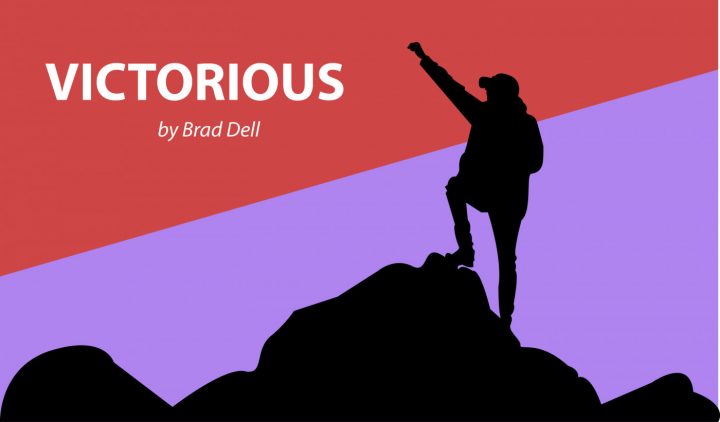When Invisible Illness Becomes Visible
Written by |

I breathed 23 years of invisible illness before retching tan-green Silly Putty into city trash bins while leashed to a bulky, wheeled, metallic canister of oxygen. Twenty-three years of rotting beneath my skin before the disease turned inside-out.
All eyes were on me as I puked, a freak show exhibit. “Step right up, ladies and gents, to witness The Atrocious Mucious!” My face burned and tears welled in my eyes. (CFers know: This caused a waterfall of snot to gush from my nose.) I wished I had enough lung function to bark at the gawkers to mind their own business. I wished my disease was invisible again.
Invisibility cloaks
I once had this silly idea that I’d be jetted off to a leper colony if people found out I was “diseased.” So, I pushed myself to the brink. I reveled in people acknowledging my energy, my smarts, my work ethic — in people acknowledging these characteristics that were uncharacteristic of those with chronic illness (or so I thought).
Life was a race. I needed to live faster than my peers. To make a legacy before departing. I’d push too hard, burn the treads from my tires, lose traction, fall behind my peers. I snuck into hospitalizations (docs called them “tune-ups”) under deceit’s cover. I couldn’t reveal to friends that I was that sick. I even strung along a fib in elementary school about me disappearing for two weeks because the latest Harry Potter film cast me. When the film was released with no Brad on the silver screen, I whined in dramatic dismay about being cut from the final product. Like Harry, I was most comfortable with being invisible, at least, when it came to my disease.
Falling apart
My deteriorative disease became a “one step forward, two steps back” deal each time I bombarded my superbugs with antibiotics. The peers I once raced neck-to-neck were now miles ahead. People held the same towering standards that I’d foolishly built for myself. I loathed people pushing me so hard despite my disease. Which was irrational, considering most friends hadn’t a clue I was ill. I suffered, bitter that I was forced to compete on even ground for the same opportunities as peers while burdened by 24/7 nausea, body aches, malnourishment, and clustered infections, plus frequent hospitalizations.
One day, at 17, I tried sitting during a three-hour bus ride through rush hour, but was told I needed to stand so a person in his 30s could take my seat: “Respect!” Shyness prevented me from explaining that a ferocious pulmonary exacerbation was ravaging my lungs. I stood, blackness swallowing the edges of my vision while waves of sweat poured from my body, splashing into a puddle on the ground. Once off the bus, I collapsed on the grass next to the stop and took a deep, long nap. I began wishing my illness was visible.
Careful what ya wish for
My disease did become known. Friends connected dots: my barking cough (“You’ve had that cold ever since I met you …”) and the occasional enzyme capsule that’d slip out of my pocket. But they couldn’t comprehend the toll my disease demanded of me, how much I suffered at home or in the hospital. (“How was your hospital ‘vacation’? Wish I got one.”) My disease was an annoying cough, nothing more. One friend lashed out at me in the library for “annoying the hell” out of him with my heavy breathing — I held my breath near him from then on. Knowing of a disease’s existence and understanding it are different concepts.
But I think friends understood once my family posted on Facebook that I was dying from a horrific blood infection and that a lung transplant was my only gamble. Or when I returned to public with oxygen tanks, puking into trash bins. Suddenly, everyone treated me differently. Like I was fragile or bound to die at any moment. (People later confessed they’d deleted me from social media because they didn’t want to view the narrative of their friend dying. I understood, though that knowledge crushed me.)
I became a hermit, humiliated by my weakness and cringing at the pity of friends I once competed with. The pity made my disease too real. The realization of how awful I looked hit me hardest when a phlebotomist walked into the vial-packed cubicle, stopped in her tracks, gave me the once-over, and asked my mother, “What happened here?” She saw a broken man on oxygen, with sunken eyes and ragged breathing. A very visible illness.
For the several months before my transplant, I seldom heard from once-close friends. Not a single person looked me in the eye — pupils instead traced the oxygen cannula running beneath my runny nostrils. People feared joking with me because they didn’t want to be “insensitive.” I felt shame, unclean because of my revolting disease.
Illness is dreadful, whether it’s visible or not. But the grass is always greener on the other side, no?
Follow my journey on my Facebook Page, Adamantium Joy.
***
Note: Cystic Fibrosis News Today is strictly a news and information website about the disease. It does not provide medical advice, diagnosis, or treatment. This content is not intended to be a substitute for professional medical advice, diagnosis, or treatment. Always seek the advice of your physician or other qualified health provider with any questions you may have regarding a medical condition. Never disregard professional medical advice or delay in seeking it because of something you have read on this website. The opinions expressed in this column are not those of Cystic Fibrosis News Today, or its parent company, Bionews Services, and are intended to spark discussion about issues pertaining to cystic fibrosis.








Frankie Tedesco
I believe everyone can learn something about CF from this beautiful writing.